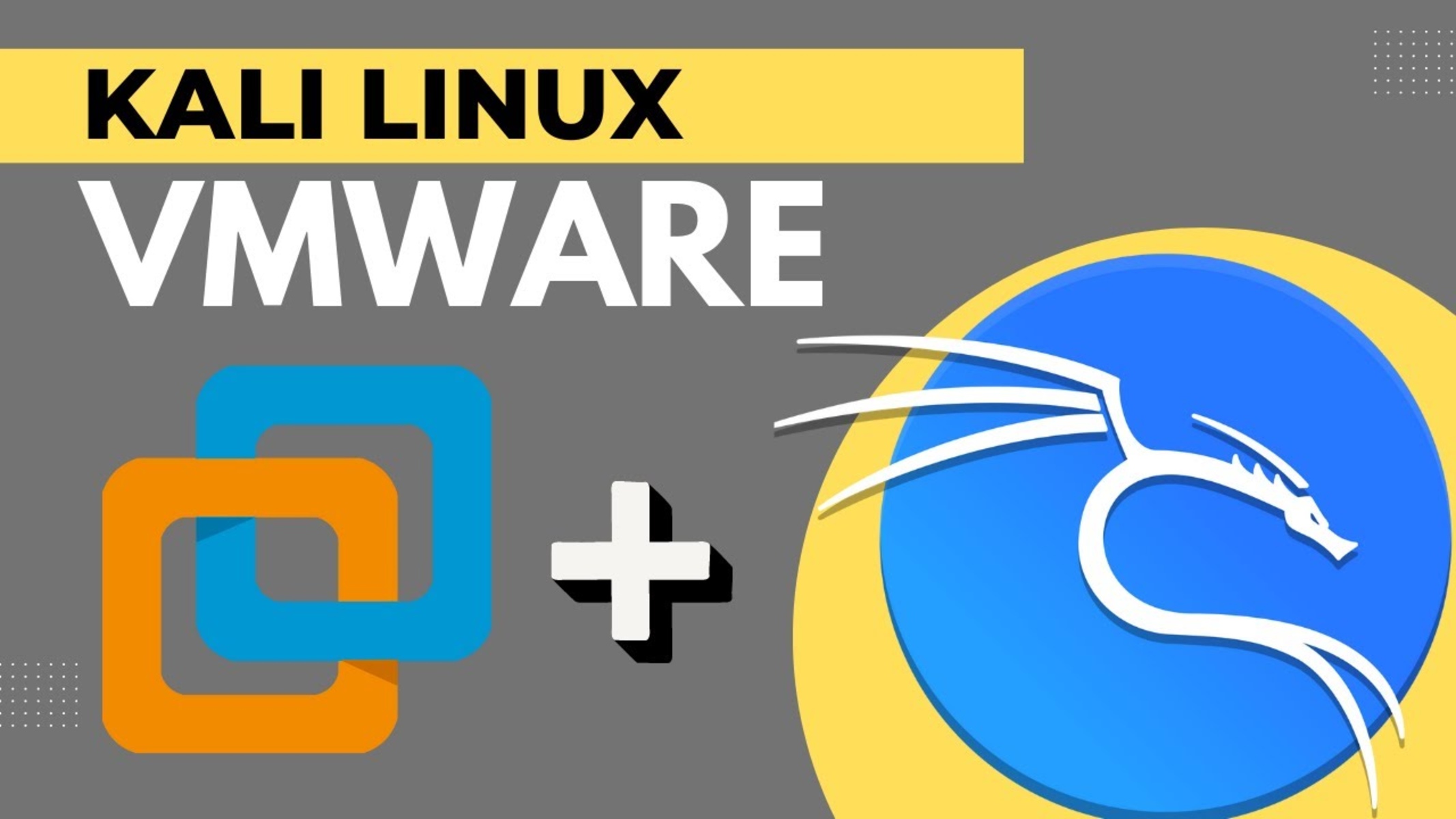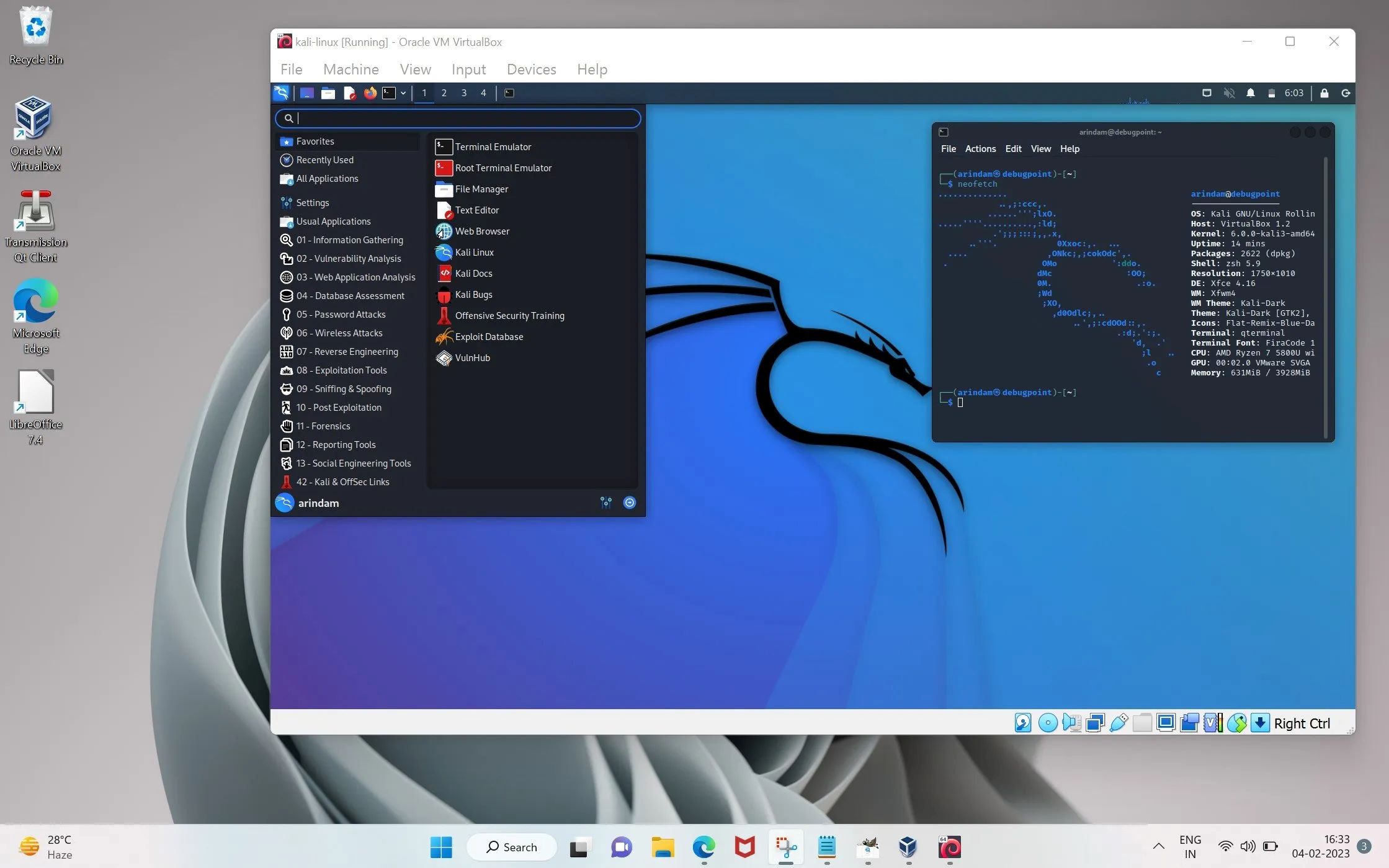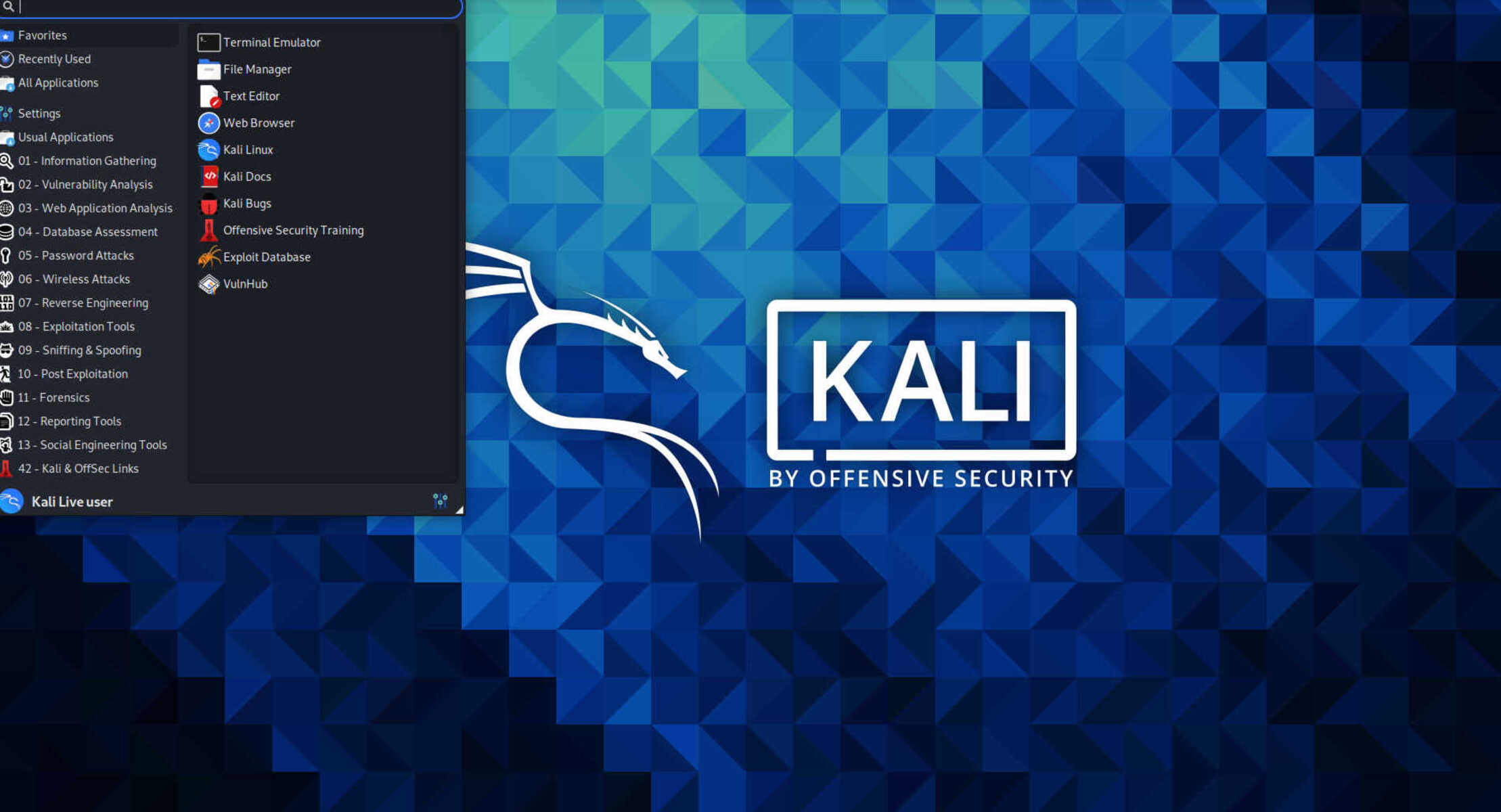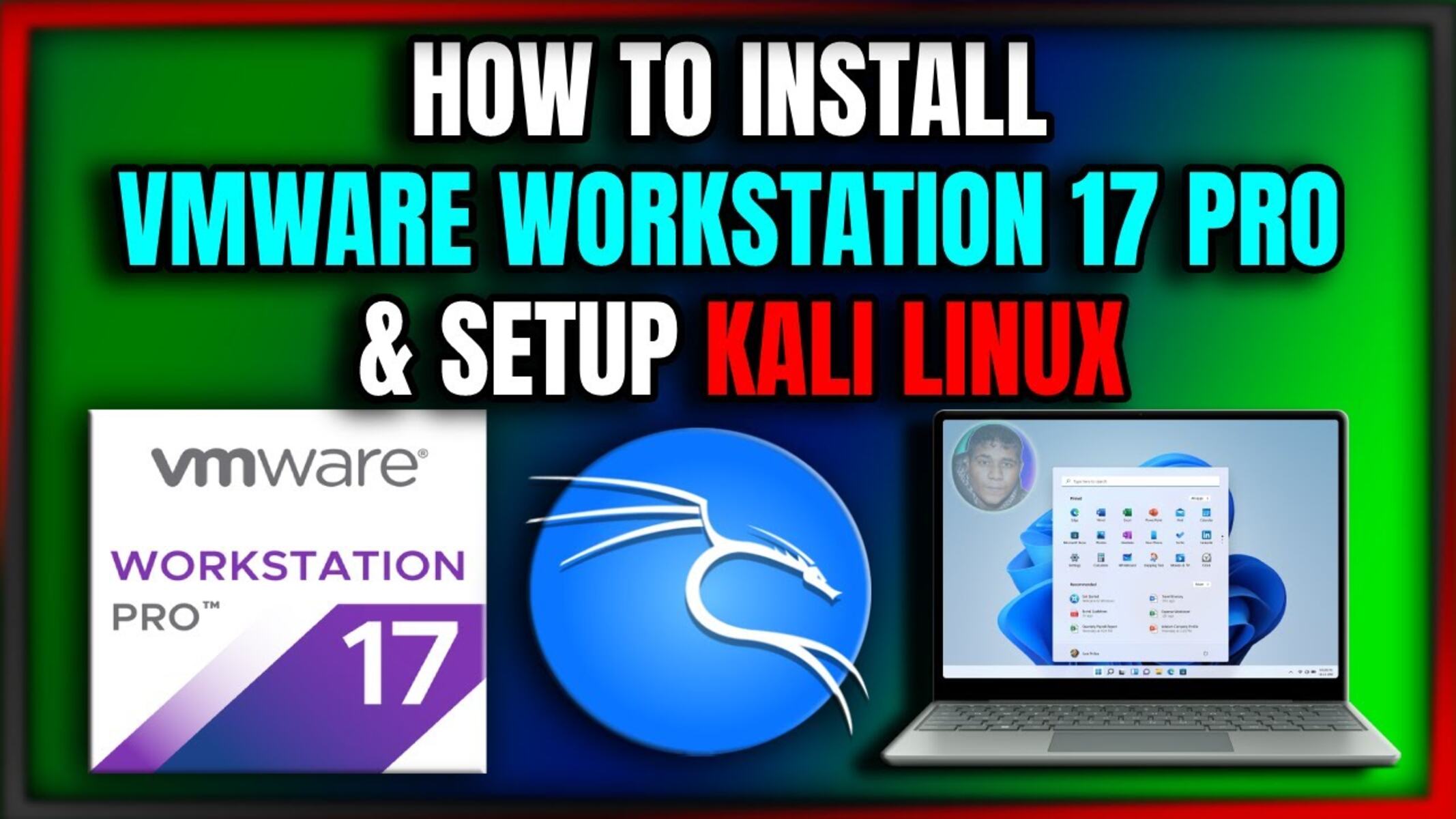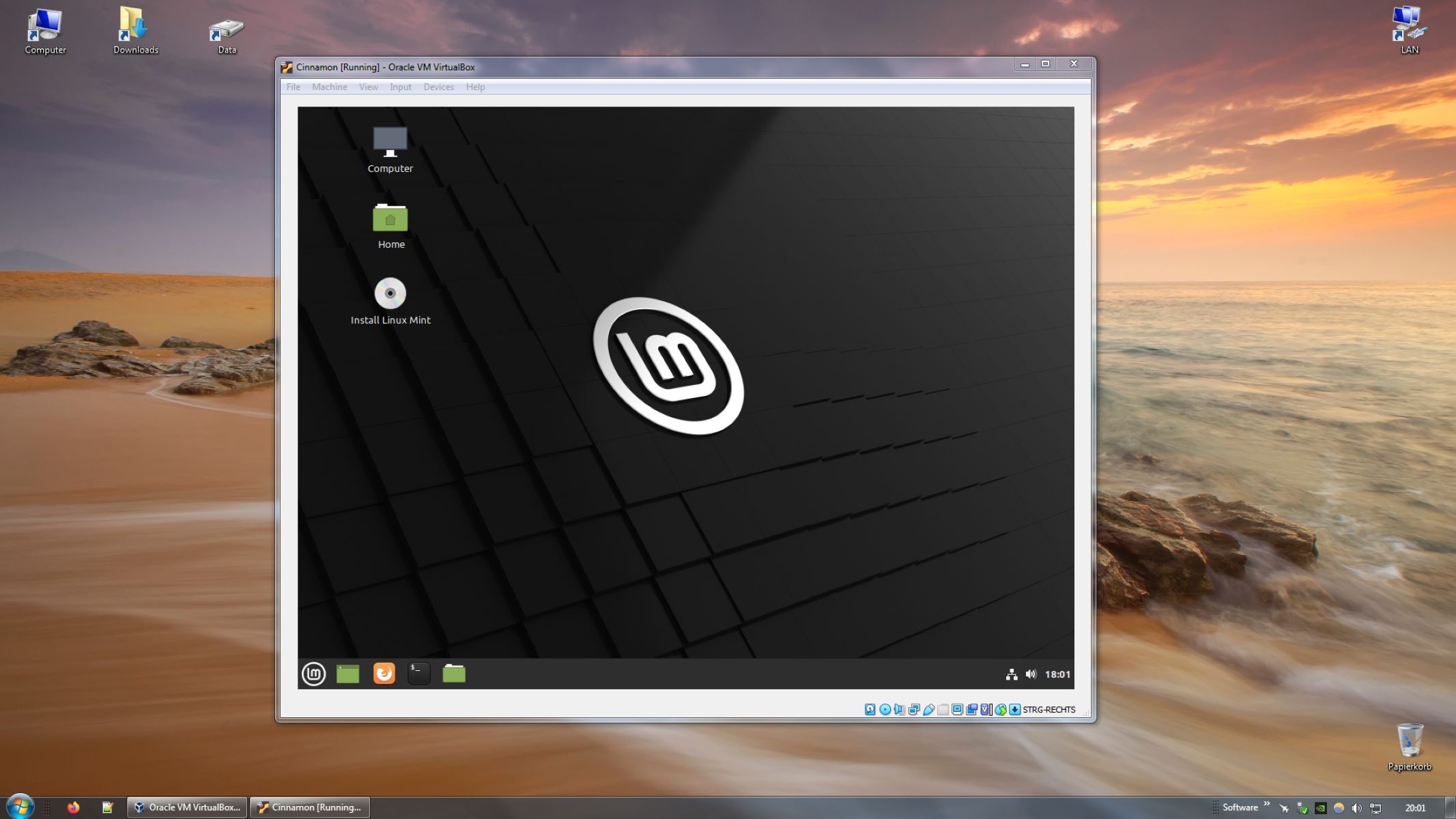Introduction
Welcome to this guide on how to download Kali Linux on VMware Workstation. Kali Linux is a popular Linux distribution that is widely used by cybersecurity professionals and enthusiasts for penetration testing, digital forensics, and network security assessments. By running Kali Linux on VMware Workstation, you can create a virtual environment to safely practice and explore various security techniques without impacting your host operating system.
VMware Workstation is a powerful virtualization software that allows you to run multiple operating systems on a single machine. It provides an easy and convenient way to set up virtual machines, making it an ideal platform for running Kali Linux.
In this guide, we will take you through the step-by-step process of downloading Kali Linux and setting it up on VMware Workstation. We will cover all the prerequisites, including downloading VMware Workstation and obtaining the Kali Linux ISO file. You will also learn how to create a new virtual machine, install Kali Linux, and configure the necessary settings to ensure a smooth experience.
Whether you are a beginner in the field of cybersecurity or an experienced professional, this guide will help you get started with Kali Linux on VMware Workstation in no time. The combination of Kali Linux’s powerful tools and VMware Workstation’s virtualization capabilities will provide you with a secure and flexible environment to enhance your skills and knowledge in the field of cybersecurity.
So, without further ado, let’s dive into the prerequisites and the step-by-step process of downloading Kali Linux on VMware Workstation.
Prerequisites for Downloading Kali Linux on VMware Workstation
Before you begin the process of downloading Kali Linux on VMware Workstation, there are a few prerequisites that you need to fulfill. These prerequisites will ensure that you have a smooth and successful installation of Kali Linux on VMware Workstation:
- VMware Workstation: You will need to have VMware Workstation installed on your computer. VMware Workstation is a virtualization software that allows you to run multiple operating systems simultaneously on a single machine. It is available for Windows, Linux, and macOS. Make sure you have the latest version of VMware Workstation installed.
- Kali Linux ISO file: You will need to download the Kali Linux ISO file from the official Kali Linux website. The ISO file contains the complete installation image of Kali Linux. Choose the appropriate ISO file based on your system architecture (32-bit or 64-bit).
- System requirements: Ensure that your computer meets the minimum system requirements to run VMware Workstation and Kali Linux. Check the VMware Workstation documentation for the specific system requirements, including CPU, RAM, and disk space.
- Internet connection: A stable internet connection is required to download VMware Workstation and the Kali Linux ISO file. It is also recommended to have an internet connection during the installation process to download any necessary updates for Kali Linux.
Once you have fulfilled these prerequisites, you are ready to proceed with the step-by-step process of downloading Kali Linux on VMware Workstation. In the next sections, we will guide you through the entire process, from downloading VMware Workstation and obtaining the Kali Linux ISO file to creating a new virtual machine and installing Kali Linux.
Step 1: Downloading VMware Workstation
The first step in the process of downloading Kali Linux on VMware Workstation is to download and install VMware Workstation. VMware Workstation is a virtualization software that allows you to run multiple operating systems on your computer simultaneously. Follow these steps to download VMware Workstation:
- Open your preferred web browser and go to the VMware website.
- Navigate to the VMware Workstation page and click on the “Downloads” tab.
- Choose the appropriate version of VMware Workstation for your operating system. VMware Workstation is available for Windows and Linux.
- Click on the “Download Now” button to start the download. The download may take some time, depending on your internet connection speed.
- Once the download is complete, locate the installation file on your computer and run it.
- Follow the on-screen instructions to install VMware Workstation on your computer. Make sure to review and accept the license agreement.
- During the installation process, you may be prompted to enter your license key or choose the evaluation mode. Enter your license key if you have one, or select the option for evaluation mode.
- Once the installation is complete, launch VMware Workstation.
Now that you have successfully downloaded and installed VMware Workstation on your computer, you are one step closer to running Kali Linux. In the next step, we will guide you through obtaining the Kali Linux ISO file that will be needed for the installation process.
Step 2: Obtaining Kali Linux ISO file
After downloading and installing VMware Workstation, the next step in the process of downloading Kali Linux on VMware Workstation is to obtain the Kali Linux ISO file. The ISO file contains the complete installation image of Kali Linux. Follow these steps to obtain the Kali Linux ISO file:
- Open your preferred web browser and go to the official Kali Linux website.
- Navigate to the “Downloads” section of the website.
- Choose the appropriate version of Kali Linux for your system. Kali Linux is available in both 32-bit and 64-bit versions.
- Select the desired Kali Linux edition. The website offers various editions, including the full Kali Linux distribution, as well as lightweight and specialized editions.
- Click on the “Download” button next to the chosen edition.
- Choose a download mirror from the list of available mirrors. It is recommended to select a mirror that is geographically close to your location for faster download speeds.
- The Kali Linux ISO file will start downloading to your computer. The download time may vary depending on your internet connection speed.
- Once the download is complete, navigate to the location where the ISO file is saved on your computer. The file will have a .iso extension.
Now that you have obtained the Kali Linux ISO file, you are ready to move on to the next step, which involves creating a new virtual machine in VMware Workstation. In the following steps, we will guide you through the process of setting up the virtual environment and installing Kali Linux.
Step 3: Creating a new virtual machine in VMware Workstation
With the VMware Workstation installed and the Kali Linux ISO file obtained, the next step in the process of downloading Kali Linux on VMware Workstation is to create a new virtual machine to run Kali Linux. Follow these steps to create a new virtual machine:
- Launch VMware Workstation on your computer.
- Click on the “Create a New Virtual Machine” option from the main dashboard. This will open the New Virtual Machine Wizard.
- Select the “Typical (recommended)” option and click on the “Next” button.
- In the next screen, choose the option to install the operating system later. Click on the “Next” button.
- Now, select the guest operating system as “Linux” and the version as “Other Linux 4.x kernel 64-bit” (assuming you are using a 64-bit Kali Linux ISO). If you have a different version, select the appropriate one.
- Give your virtual machine a name and choose a location to save it on your computer.
- In the next screen, specify the disk size for the virtual machine. The default size is usually sufficient, but you can adjust it according to your needs. Click on the “Next” button.
- Review the settings summary and click on the “Finish” button.
- Now, you will see your newly created virtual machine listed in the VMware Workstation dashboard.
- Next, click on the “Edit virtual machine settings” option to customize the virtual machine configuration.
- In the hardware settings, select the “CD/DVD (IDE)” option and choose the “Use ISO image file” option.
- Browse to the location where you saved the Kali Linux ISO file and select it.
- Click on the “OK” button to save the settings.
Congratulations! You have successfully created a new virtual machine for Kali Linux in VMware Workstation. In the next steps, we will guide you through the process of installing Kali Linux on the virtual machine and configuring its settings.
Step 4: Installing Kali Linux on the virtual machine
Now that you have created a new virtual machine in VMware Workstation, it’s time to install Kali Linux on the virtual machine. Follow these steps to complete the installation:
- Ensure that the virtual machine is selected in the VMware Workstation dashboard.
- Click on the “Power on this virtual machine” option to start the virtual machine.
- The virtual machine will boot up and display the Kali Linux boot menu. Use the arrow keys to select the “Graphical Install” option and press Enter to proceed.
- The installation process will begin, and you will be prompted to select your preferred language and location.
- Next, select your keyboard layout and continue.
- In the network configuration step, you can leave the default settings or configure the network as per your requirements.
- Proceed with the installation by specifying a hostname for your Kali Linux system.
- Choose a domain name or leave it blank if you don’t have one.
- Now, set up the root password for your Kali Linux system. Make sure to choose a strong password.
- Partition the disk by selecting the guided option or manually configuring the partitions.
- Confirm the partition changes and proceed with the installation.
- During the installation, the necessary packages will be installed, and the system will configure the installation components.
- Once the installation is complete, you will be prompted to install the GRUB bootloader. Select the default option and click on the “Continue” button.
- Finally, the installation process will finish, and you will see a message indicating the successful installation of Kali Linux.
- Click on the “Continue” button to reboot the virtual machine.
After the virtual machine restarts, you will see the Kali Linux login screen. Enter the root username and the password you set during the installation process.
Congratulations! You have successfully installed Kali Linux on the virtual machine. In the next step, we will guide you through configuring the Kali Linux settings to optimize your virtual environment.
Step 5: Configuring Kali Linux settings
After installing Kali Linux on the virtual machine, it’s important to configure some settings to optimize your virtual environment. Follow these steps to configure the Kali Linux settings:
- Log in to Kali Linux using your root username and password.
- Once you are logged in, open the terminal by clicking on the terminal icon in the taskbar or by pressing Ctrl+Alt+T.
- Update the system packages by running the following command in the terminal:
sudo apt update && sudo apt upgradeThis will ensure that you have the latest updates and security patches installed.
- Install the VMware Tools to enhance the performance and functionality of Kali Linux in VMware Workstation. Follow the VMware Tools installation guide provided by VMware for detailed instructions.
- Configure the network settings in Kali Linux to ensure internet connectivity. You can use the network settings provided by VMware Workstation, such as NAT or bridged networking, to connect to the internet from within the virtual machine.
- Customize the Kali Linux desktop environment according to your preferences. You can change the wallpaper, desktop icons, and panel settings by right-clicking on the desktop and selecting the appropriate options.
- Configure any additional software or tools that you may need for your specific tasks. Kali Linux comes with a variety of pre-installed tools, but you can also install additional software from the Kali Linux repositories using the apt package manager.
- Set up any specific security configurations or permissions as per your requirements. You can refer to the Kali Linux documentation or online resources for guidance on securing your Kali Linux installation.
- Take a snapshot of the virtual machine in VMware Workstation to create a backup point that you can revert to if needed. This will allow you to easily restore your Kali Linux installation to a previous state.
By following these configuration steps, you can optimize your Kali Linux virtual environment and ensure that it aligns with your specific needs. Now, you’re ready to start using Kali Linux on VMware Workstation for your cybersecurity activities, such as penetration testing, digital forensics, and network security assessments. In the next step, we will guide you through starting Kali Linux on VMware Workstation.
Step 6: Starting Kali Linux on VMware Workstation
Now that you have configured the settings for Kali Linux on VMware Workstation, it’s time to start the virtual machine and begin using Kali Linux. Follow these steps to start Kali Linux:
- Open VMware Workstation on your computer.
- In the VMware Workstation dashboard, select the virtual machine that you created for Kali Linux.
- Click on the “Power on this virtual machine” option to start the virtual machine.
- The virtual machine will boot up and you will see the Kali Linux login screen.
- Enter your root username and the password you previously set during the installation process.
- After successfully logging in, you will be greeted by the Kali Linux desktop environment.
- Take a moment to familiarize yourself with the various tools, applications, and features available in Kali Linux.
- Start exploring the wide range of security-related tools and utilities that come pre-installed with Kali Linux.
- Use the terminal to run various commands and perform tasks related to cybersecurity.
- Access the Kali Linux documentation and online resources to learn more about the available tools and their usage.
- Remember to regularly update your Kali Linux installation by running the command
sudo apt update && sudo apt upgradeto ensure you have the latest security patches and updates.
With Kali Linux up and running on VMware Workstation, you are now ready to utilize its powerful tools for penetration testing, digital forensics, and network security assessments. Make sure to follow ethical guidelines and legal regulations when using Kali Linux for security purposes.
Enjoy your cybersecurity journey with Kali Linux and keep enhancing your skills in the ever-evolving field of information security.
Conclusion
Congratulations on successfully downloading Kali Linux on VMware Workstation! In this guide, we have covered the step-by-step process of setting up Kali Linux on VMware Workstation, from downloading the necessary software to configuring the virtual machine and installing Kali Linux. Let’s recap the key points we covered:
We started by ensuring that you have VMware Workstation installed and the Kali Linux ISO file obtained. We then proceeded to create a new virtual machine in VMware Workstation and installed Kali Linux on it. After the installation, we discussed the importance of configuring the Kali Linux settings and customizing the virtual environment to suit your needs. Finally, we learned how to start Kali Linux on VMware Workstation and begin utilizing its vast array of security-related tools and utilities.
By running Kali Linux on VMware Workstation, you now have a safe and isolated environment to practice and enhance your skills in various cybersecurity domains, including penetration testing and digital forensics. Remember to keep your Kali Linux installation updated and regularly explore the latest tools and techniques in the cybersecurity field.
As you delve deeper into the world of Kali Linux, continue to stay informed about ethical guidelines and legal regulations surrounding the use of cybersecurity tools. It is essential to use your knowledge and skills responsibly, always seeking authorization and acting within the boundaries of the law.
Now that you have the foundation for using Kali Linux on VMware Workstation, continue to explore, learn, and push your boundaries in the exciting field of cybersecurity. Wishing you success on your journey of discovery and empowerment with Kali Linux!







